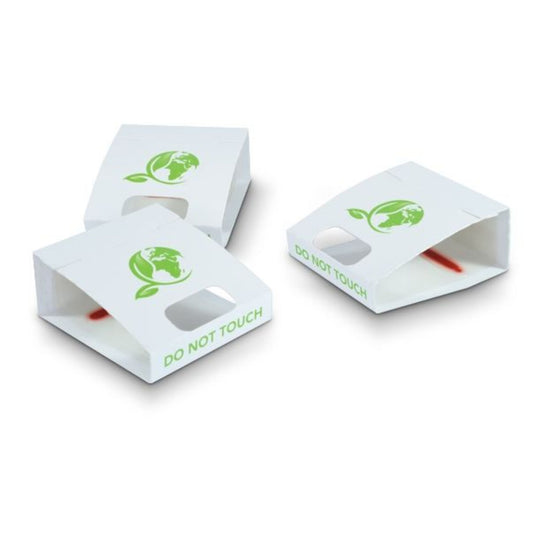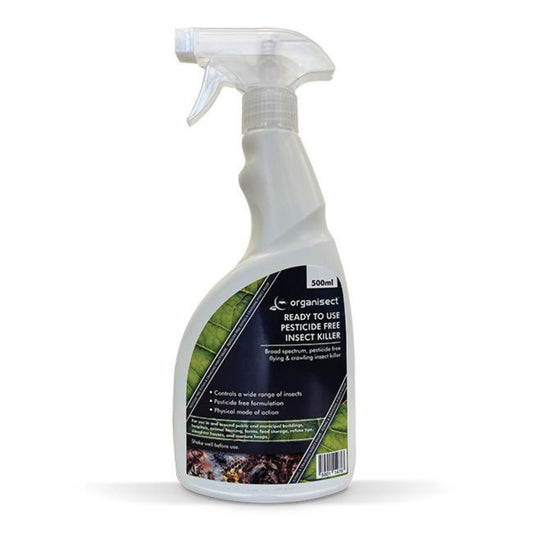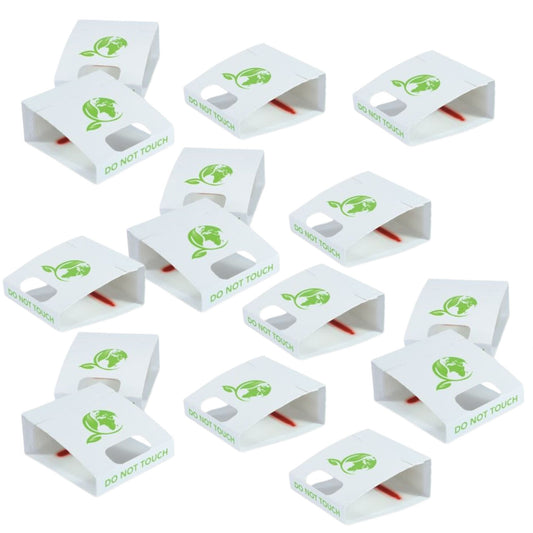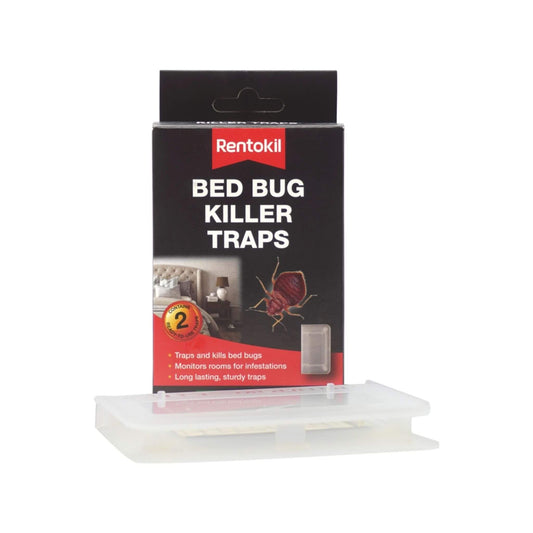
Expert Guide on How to Get Rid of Bedbugs Yourself
Share
Bedbugs are one of the most feared pest species around. Having bedbugs makes you horribly uncomfortable in your home. And unless you know how to get rid of bedbugs, it can seem almost impossible to eliminate these biting pests.
Difficult isn't the same as impossible. Getting rid of bedbugs requires tons of work, but with the right products and the correct techniques, you can solve a bedbug problem yourself.
Take back your home from these pests. Here's how to live a bedbug-free life.
Understanding Bedbug Behaviour
What Are Bedbugs?
Bedbugs are insects that eat on blood, especially human blood, feeding every 5 days on average using a proboscis through which they pierce the skin of its host and inject an anaesthetic. They live as close to us as possible so that they're never far from their food despite being able to survive for prolonged periods without eating.
As disgusting as bedbugs are, it's important to know a bit about them if you want to be able to get rid of them.

Identifying bedbugs
An adult bedbug is around 4-5 mm long, with an oval shape. They are broad and flat unless they have recently fed, and are a reddish-brown colour. They look like apple seeds with legs.
Although visible to the naked eye, bedbugs are good at hiding. They get their name from living in beds where humans spend the night.
Bedbugs are nocturnal. They come out at night when people are asleep to feed on our blood. They have a needle-like mouth to pierce human skin. In our experience, generally, you won't feel a bedbug bite.
Why Bedbugs Infest Homes
Bedbugs aren't a sign of an unclean home. Bedbugs live happily in clean homes or even five-star hotels.
Bedbugs can't survive outside. They don't live on humans, but they can hitch a ride on us. If you've been somewhere that has bedbugs, including a hotel, you may end up with a bedbug on your clothing that you bring home.
Once almost extinct, bedbugs made a dramatic comeback at the start of the 21st century partly because people travel more these days.
Another way bedbugs get into a home is by travelling on furniture. Second hand furniture is a big risk, as bedbugs can hide in cracks and crevices including in the furniture.
Finally, we find that bedbugs can easily travel between units in multifamily housing. If you live in a flat, you might get bedbugs from your neighbours.
Breeding Habits of Bedbugs
This is where things get a little gross and a lot scary.
Bedbugs are tough to get rid of as they can be hard to detect and have a high reproduction rate. An adult female can lay 500 eggs in her lifetime. It takes around 21 days at room temperature for an egg to hatch and become an adult. Then, if the bug is female, she can start laying eggs.
The maths here is terrifying. A bedbug population can double in size every 16 days. Under ideal conditions, a single female bedbug could have 38 million descendants in a year!
An individual bedbug isn't hard to kill. What's hard is finding and killing every single one of them. But that's what you have to do to solve a bedbug problem.

Health and Safety Risks
There aren't many good things about bedbugs, but one nice thing you can say about them is they don't spread disease.
That doesn't mean they're harmless. The bites can be extremely itchy and cause raised lumps as a result of an allergic reaction. Bites can cause insomnia, anxiety, and skin problems.
Many people find that one of the worst aspects of bedbugs is the psychological stress. It's impossible to sleep when bugs start biting you once the lights are out. That's why it's important to get rid of bedbugs as soon as you identify a problem.
Identifying Signs of a Bedbug Infestation
Regular and effective monitoring is essential to identifying and treating a bed bug infestation.
The first clues of a bedbug problem is bed bug sightings or bites. You'll find people saying you can identify bedbug bites by size, shape, or pattern. But in our experience, that's not true. Everyone reacts differently to bedbug bites. Some people get huge, itchy red welts, while other people don't react at all.
Bedbug bites look like the bites of other insects like mosquitoes. But if you get lots of bites without being outdoors or you get bitten in the winter, you might have bedbugs.
Along with bed bug sightings and bites, you may start to notice some of these other signs of a bedbug infestation:
- Droppings. Because bedbugs only feed on blood, their droppings leave stains. Bedbug droppings resemble small black dots, like from a permanent marker. You'll find droppings on bedsheets, mattress seams, bed frames, or other places bedbugs hide.
- Blood spots. Sometimes, you'll crush a feeding bedbug by moving in your sleep. That can leave a small blood spot on the bedsheets.
- Shed skins. Bedbugs shed their skins to grow. The shed skin looks a lot like the adult insects but is an orange colour and hollow inside.
- Eggs. Bedbug eggs are white and visible on dark surfaces. However, they are only 1 mm long, so you'll need good eyesight.

Common Locations for Bedbugs
The hardest part about getting rid of bedbugs yourself is finding them this is especially true when they are in their early nymphal stages when they can be very hard to spot. Remember to think in three dimensions; these bugs climb walls. Bedbugs will travel up to 100 feet or 30 m from their hiding place to feed. Some common places we typically find bedbugs are:
- Mattress seams. This is their favourite place to hide.
- Gaps in your bed frame, especially a wooden bed frame.
- Behind the headboard, especially in hotels with wall-mounted headboards.
- Seams on upholstered furniture like armchairs and couches.
- Wooden furniture like tables and chairs, especially joints or screw holes.
- Behind skirting boards and the faceplates of plug sockets and light switches.
Preventing Bedbug Infestations
Remember, bedbugs have to get inside your house to become a problem. Here's what we recommend you do to make that less likely:
- When staying in hotels, keep your bags in the bathroom. Don't put them on the bed. Inspect beds in hotels for signs of bedbugs. If you find any, get another room.
- Avoid second hand furniture. Or at least treat it for bedbugs before bringing it home. See below for effective treatment methods.
- Wash all your clothes after a trip or when coming back from somewhere which may have had a bedbug problem.
- If you live in an apartment, seal up gaps around pipes and electrical wires that allow bedbugs to travel between units.
You can also help bedbug-proof your home by keeping it clean and organised. The less clutter you have, the quicker you will spot any infestation, making it easier to get rid of.

DIY Bedbug Solutions
If you have a bedbug population in your home, there's a lot you can do about it. Here are some methods we recommend:
- Natural solutions: Rubbing alcohol will kill bedbugs on contact. However, it's highly flammable, so don't use it widely in your home. Diatomaceous earth, on the other hand, is safe and available in DIY shops. This pesticide-free powder scratches the bedbug's skin, making it dehydrate and die. Use it on baseboards and bedframes.
- Bedbug killer traps: These bed bug traps are placed under the legs of your bed and other furniture, catching any bedbugs that try to climb up. Make sure your bed is away from the wall and that no sheets or blankets are hanging down to the floor. You won't solve a bedbug problem with interceptors alone. But they make a useful monitoring tool that lets you know the scale of your problem.
- Vacuuming and steaming: This is the best way to get rid of bedbugs by yourself. I've personally treated hundreds of homes for bedbugs using steam. It works so well because the heat from a good steam cleaner destroys bedbug eggs and adult bugs. Take your time and make sure you treat everywhere bugs hide. Use a vacuum first to remove any adult bugs, then discard the vacuum bag outside the house. Use the steam to kill the eggs. Make sure you hold the steam cleaner in place long enough for the heat to penetrate deep into the mattress or furniture. It takes hours to treat a house this way, but it works amazingly when done right.
- Washing and freezing clothes: Bedbugs hide in fabrics. When treating your home for bedbugs, don't forget your clothes. Washing your clothes on a hot cycle and using a hot dryer is a good way to kill bugs in your clothes. However, you should store them in plastic bags or plastic boxes afterwards to make sure they don't get reinfested. Freezing can also treat delicate items you don't want to steam, such as clothing or soft toys. Freeze things for at least four days at the lowest temperature possible. You'll need to keep the temperature below -13° C.

Chemical Solutions: When to Use Chemical Bedbug Killers
Pesticides can help solve a bedbug problem when used correctly. Pesticides including permethrin and pyrethrins kill adult bedbugs. However, they aren't as effective at destroying the eggs. Always use gloves with pesticides. Follow the manufacturer's instructions and don't overuse pesticides. This can reduce their effectiveness and put your health at risk. You may also wish to consider using a non-toxic insect killer spray.
When to Use Professional Bedbug Control Services
Have you taken all our advice on how to stop bedbugs but don't appear to be getting anywhere?
Many bedbug problems, especially low-level infestations, can be solved on your own. But sometimes, it's necessary to call a professional pest control company. They have access to chemicals and equipment you don't. Plus, experience helps when dealing with bedbugs.
Some companies can heat your entire home hot enough to kill all bedbugs. While this treatment is expensive, it is very effective. This can save you time and stress, and many companies offer guarantees for peace of mind.

Final Thoughts
Bedbugs deserve their reputation as one of the toughest pests to get rid of. But tough isn't the same as impossible. Washing all your clothes, then storing them in plastic bags while you steam your furniture and apply diatomaceous earth around baseboards is a ton of work. Plus, to defeat the bedbug lifecycle, you'll probably have to do it 2-3 times in a month or so.
It's worth it if it means you won't have bedbugs anymore. By keeping your home uncluttered and being careful about what you bring home, you can make sure you never have to deal with this problem again.
At PestBuddy, we're here to empower you with effective, fast and easy-to-use DIY bedbug control products. Explore our range of products to take control of your pest problems with confidence.





